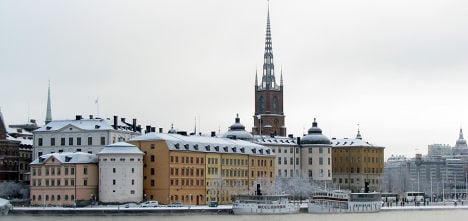Stockholm came tenth out of 271 regions on the list, which was led by London. Olle Zetterberg, CEO of Stockholm Business Region, the capital’s official investment promotion agency, told The Local that the city’s success was due to its good business climate. He added that Stockholm might do even better next time:
“Stockholm has weathered the recession much better than many other European regions. We have low unemployment – in fact we have around 75,000 more people in work now than three years ago.”
London had by far the highest GDP per capita of any European region in the list, which was compiled using figures from 2007, before the financial crisis plunged Europe into recession. Stockholm’s performance put it ahead of Copenhagen, in 18th place, or Åland, in 20th place. Stockholm was beaten by regions including Luxembourg, Brussels, Hamburg, Prague and Paris. The poorest regions on the list were in Romania and Bulgaria.
The figures come on the heels of a survey by fDi Magazine, in which Stockholm was ranked as one of European cities with the brightest economic futures. Stockholm came fourth in the rankings, which were also led by the British capital. The survey rated cities according to economic potential, human resources, infrastructure, quality of life and FDI strategy.
Zetterberg said that foreign investment in Stockholm had continued throughout the downturn, and his organization had assisted in 70 cases of foreign direct investment in 2009.
Many investments had been in the ICT and life science sectors, including Chinese mobile phone maker Huawei, which announced last year that it was to start developing new handsets at its Stockholm base. The company currently employs around 180 people in Stockholm, many of whom are former Ericsson or Sony Ericsson workers.
As well as established clusters in the Life Science and ICT sectors, Stockholm’s success in attracting investment had been helped by the region’s various local councils and political parties working together on a growth strategy for the region, Zetterberg said:
“We live in a peripheral location – we’re not far from the North Pole. Businesses don’t care about local government government boundaries, so we need to work together.”



 Please whitelist us to continue reading.
Please whitelist us to continue reading.
Member comments